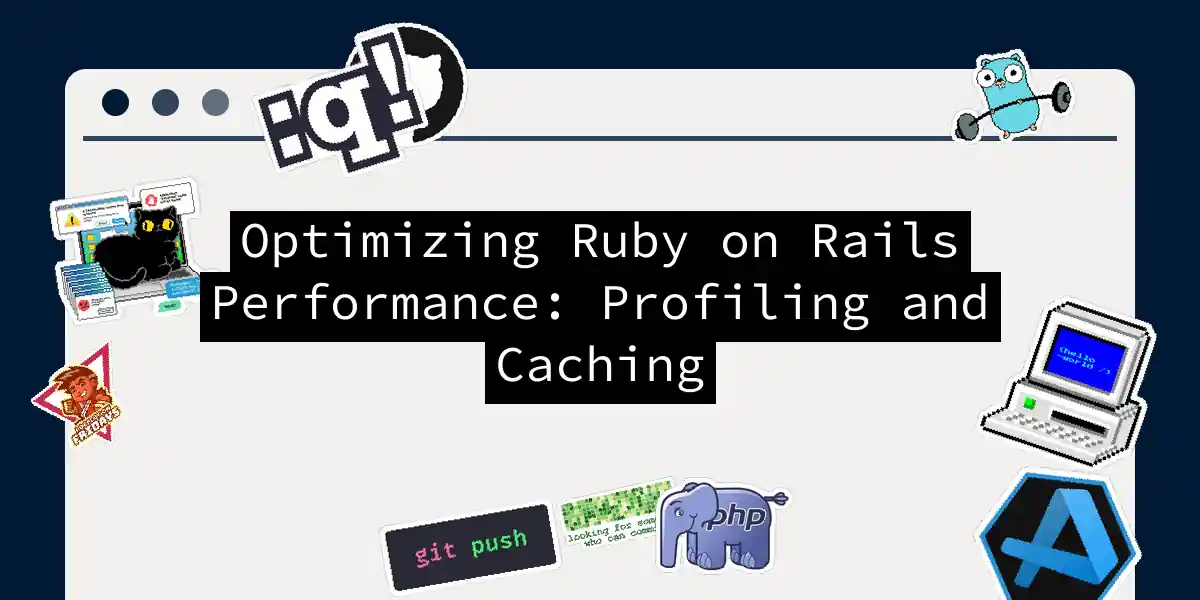Introduction to Performance Optimization
Optimizing the performance of a Ruby on Rails application is akin to fine-tuning a high-performance sports car. You need to ensure every component works in harmony to deliver speed, efficiency, and a seamless user experience. In this article, we’ll delve into two critical aspects of performance optimization: profiling and caching.
Why Performance Matters
Performance isn’t just about speed; it’s about user satisfaction and business success. A slow application can lead to frustrated users, lost sales, and a damaged reputation. On the other hand, a well-optimized application can boost user engagement, increase conversions, and reduce operational costs.
Profiling: Identifying Bottlenecks
Profiling is the process of analyzing your application to identify bottlenecks—areas where performance is compromised. It’s like using a detective’s magnifying glass to pinpoint the culprits slowing down your app.
Tools for Profiling
Several tools are available to help you profile your Rails application:
- New Relic: Offers comprehensive performance monitoring, providing insights into transaction times, database queries, and error analysis.
- Scout: A lightweight tool that provides real-time performance metrics, including response times and memory usage.
- Rack-mini-profiler: Helps identify slow queries and rendering times during development.
Steps to Profile Your Application
- Install Profiling Tools: Add gems like
newrelic_rpmorscout_apmto your Gemfile. - Run Your Application: Start your server and interact with your app to generate traffic.
- Analyze Performance Data: Use the tools to identify slow queries, memory leaks, or inefficient code.
Caching: Speeding Up Your Application
Caching is a technique that stores frequently accessed data in memory for quick retrieval. It’s like having a super-efficient librarian who fetches books from a nearby shelf instead of the entire library.
Types of Caching
- Fragment Caching: Caches parts of a view.
- Russian Doll Caching: A nested caching strategy that caches both the outer and inner parts of a view.
- Page Caching: Caches entire pages.
Implementing Caching
Here’s how you can implement caching in Rails:
# Fragment Caching Example
<% cache('products') do %>
<%= render partial: 'product', collection: @products %>
<% end %>
# Russian Doll Caching Example
<% cache('products_list') do %>
<%= render partial: 'product_list', collection: @products %>
<% end %>
# Page Caching Example
class ProductsController < ApplicationController
caches_page :index
end
Caching with Redis
Redis can be used as a caching backend for Rails. It’s an in-memory data store that provides faster access times compared to traditional caching methods.
# Configure Redis as Cache Store
Rails.application.configure do
config.cache_store = :redis_store, {
url: 'redis://localhost:6379/1',
namespace: 'cache'
}
end
Profiling and Caching Workflow
Here’s a sequence diagram illustrating how profiling and caching work together:
Additional Optimization Techniques
Database Optimization
- Avoid N+1 Queries: Use eager loading (
includes) to reduce database queries. - Indexing: Add indexes to frequently queried columns.
- Lazy Loading: Use
lazymethods to defer loading large collections.
Code Optimization
- Use Built-in Methods: Prefer built-in Ruby methods for performance.
- Memoization: Cache results of expensive function calls.
- Background Jobs: Offload long-running tasks using tools like Sidekiq.
Asset Optimization
- Minification and Concatenation: Reduce file sizes for faster downloads.
- CDNs: Use Content Delivery Networks for asset delivery.
Conclusion
Optimizing the performance of a Ruby on Rails application is a continuous process that involves identifying bottlenecks through profiling and speeding up data access with caching. By combining these techniques with other optimization strategies, you can transform your application into a high-performance powerhouse that delights users and boosts business success. Remember, every millisecond counts, and with the right tools and techniques, you can make your Rails app faster than a speeding bullet
